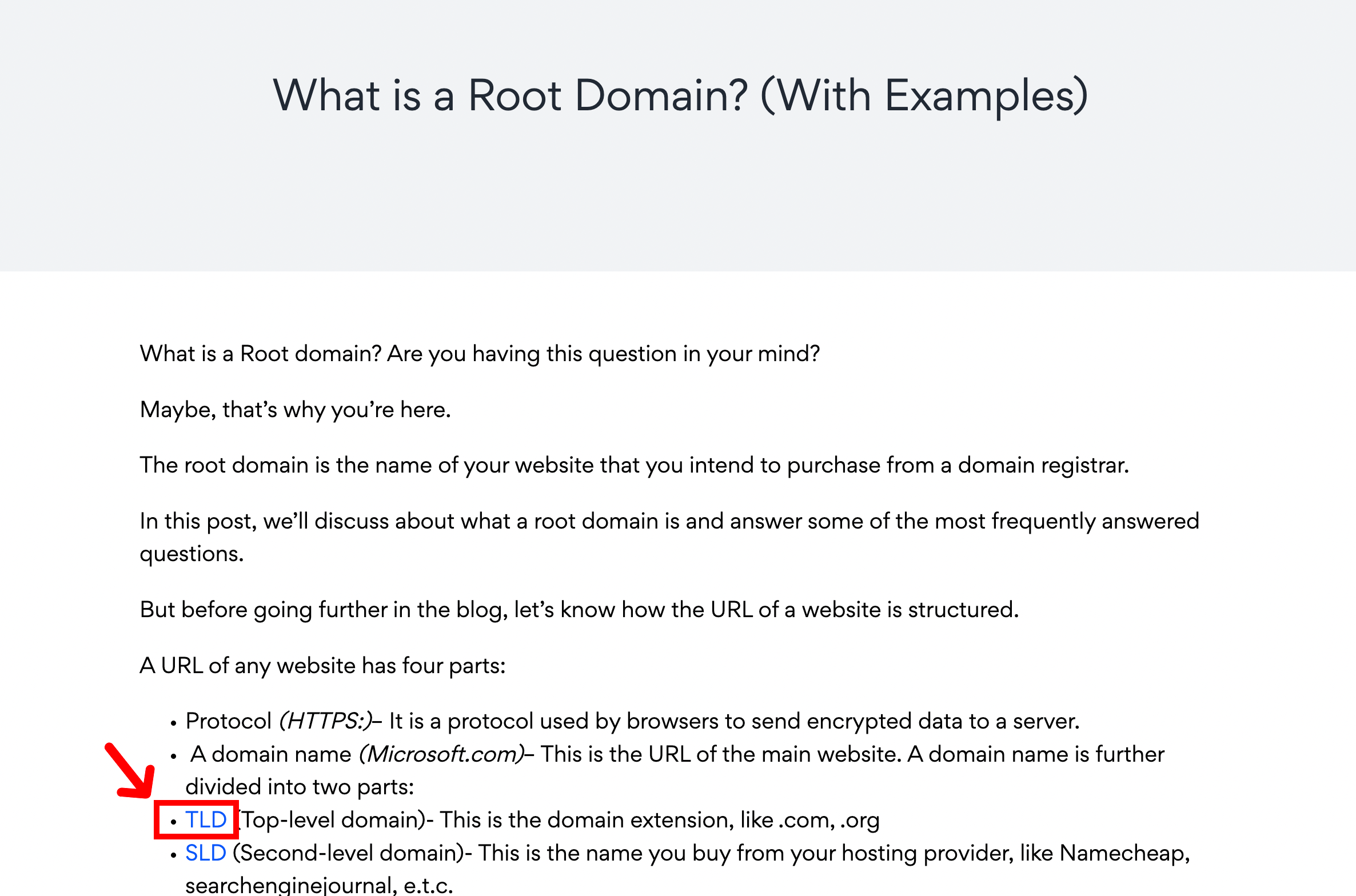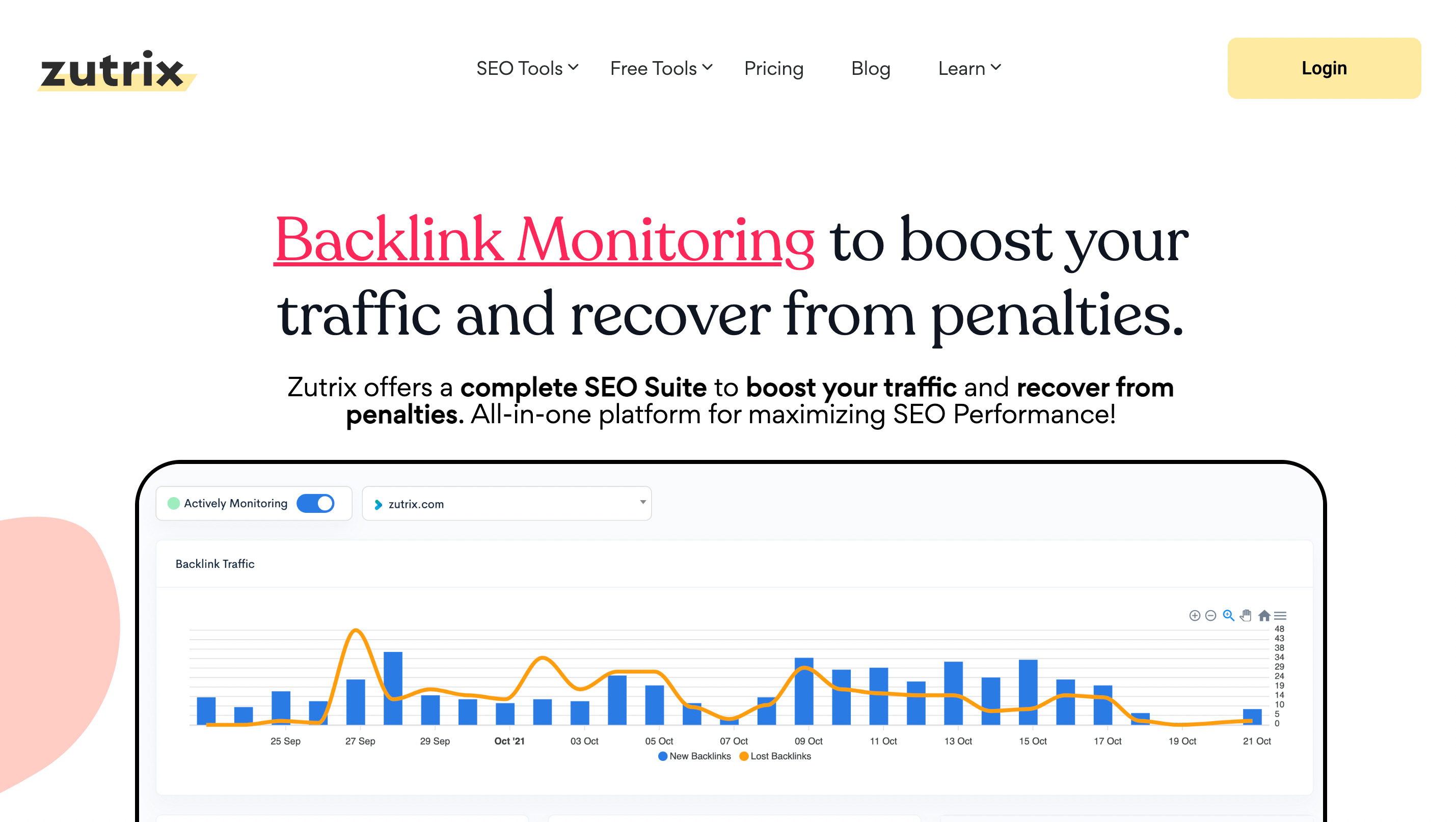What is an Inbound link?
If you also have the same question, you have come across the right place.
Inbound link is a very popular term webmasters and SEOs use to identify a particular type of link.
If you’re hearing this term for the first time, you might get confused.
To clear out your confusion and help you find the meaning of this word, in this blog post, we’ll discuss what is an inbound link, why everyone says it’s a crucial part of SEO, and how you can use it to your advantage for climbing up the SERP ladder.
Table of Contents
What is an Inbound Link?
An inbound link is basically a backlink that comes from a third-party website to your website.
If you have heard about building backlinks before, it’s the same thing.
Any Inbound link has two components: a link to your website or specific page and an anchor text under which the backlink has been inserted.
It’s an essential part of the whole website ecosystem that helps search engines like Google evaluate the worth of a web page based on the number of inbound links it gets.
Here’s an example of an Inbound link that we have placed in one of our posts.

You can clearly see we have linked to one of the Wikipedia pages for the anchor text “TLD” because that page is highly relevant to that topic and shares a deeper understanding of the word “TLD” OR “top-level domain.”
Why Inbound Links Are a Crucial Part of SEO?
Now that you know the meaning of Inbound links, let’s quickly understand why it’s a crucial part of any SEO strategy that no one can overlook.
Before ranking any web page, Google evaluates a web page based on various ranking factors.
As Google bots do not have the ability to read and understand your content, they sorely rely on these ranking factors to evaluate the relevance and worth of any web page.
Among all the possible ranking factors that Google uses, backlinks are the most crucial one after content quality.
When an external website links out to your web page, it sends out a voting signal to Google that your content is of high quality and other websites are finding your content or web page credible.
Especially inbound links that do not contain the “nofollow” attribute within the HTML link tag pass PageRank from the linking page to your web page, which in return increases the overall PageRank of your web page.
If you don’t know what PageRank is, it’s an algorithm by Google that helps them evaluate the relative importance of any web page.
In the early days of Google, the effects of inbound links on your SEO performance mainly depended on the number of links a page had.
But now, the game has completely changed.
While the number of inbound links still plays a crucial factor, the quality of links determines how well your web page will perform in the search engine.
By quality, I mean inbound links that come from relevant and high-authority websites.
Inbound Vs. Outbound Vs. Internal Links
In SEO, we mainly focus on three types of links:
- Inbound links
- Outbound links
- Internal links
All of these three types of links are a crucial part of SEO.
As we have already shared, Inbound links (also known as backlinks) are links that come from an external website to a specific page on our website.
On the flip side, Outbound links do the opposite.
Outbound links are the links that we point out to some other external websites from our website.
Lastly, Internal links are the links that point from one page to another page of your website.
If you want to build a solid SEO foundation for your website and rank higher for your targeted keywords, you must prioritize each of these link types.
How to Check Inbound Links of Your Website
To be honest, checking inbound links that came to your website is a tricky task.
Thankfully, Zutrix’s backlink checker tool streamlines this process and lets you see all the inbound links coming to your website in real-time.
To check and monitor your Inbound links, sign up with Zutrix and submit your website for backlink monitoring.

Our AI-powered intelligent system will monitor your backlink profile and alert you whenever your website receives a brand-new inbound link.
Our current backlink database consists of 94 billion inbound links, and our database is refreshed every 24 hours.
Additionally, our tool assigns a spam score to each inbound link and helps you disavow spammy backlinks directly from the tool itself.
How to Get Inbound Links on Your Website
Building high-quality inbound links is one of the most challenging tasks of SEO.
But with the right strategies, you can crack the code and build hundreds of quality and relevant inbound links to your website to skyrocket your SERP positions.
Let’s quickly look at some of our favorite data-backed backlink strategies that work like a charm.
1. Create Linkable Assets
Linkable assets are the pages on your website that are created solely to attract backlinks from other websites.
In other words:
You have to create certain types of content that other webmasters would love to link naturally.
Some of the proven linkable assets that we have noticed worked really well for most of the websites are:
- Free basic tools
- Long-form guides
- Statistics or data-focused content
- Market research about a specific topic
- Infographics
For example, at Zutrix, we have plenty of free useful tools that help us generate a handful amount of quality backlinks on complete autopilot.
That being said, creating a linkable asset is just one piece of the puzzle. You will also have to promote that linkable asset as heavily as you can so that people can discover your asset and link them back.
2. The Broken Link Way
All websites suffer from one thing – broken links.
Broken links not only impact a website’s user experience but also negatively impact SEO performance.
But it can be an opportunity for you.
In the broken link-building method, you have to find broken links on web pages within your niche and recommend your page as a replacement for them.
It’s a win-win for both because you’re getting an inbound link for free, and they are protecting their SEO and user experience by replacing the dead link.
3. The Skyscraper Technique
The Skyscraper technique is quite a popular link-building method among SEOs.
This method was originally discovered by Brian Dean, a famous SEO expert who used to run the blog Backlinko.
The Skyscraper method is pretty easy to understand and execute.
In this technique, you will first have to find popular content pieces within your niche with a decent number of inbound links.
Next, you will have to create ten times better content than the existing one and reach out to the webmasters who have already linked to similar content.
Most of the time, webmasters will be happy to link to your page, which can also be a helpful resource for their readers.
Conclusion
Inbound links are a crucial part of search engine optimization that you can’t ignore even if you want.
Building inbound links is one of the most difficult, time-consuming, and expensive tasks of SEO.
But it’s not rocket science.
If you follow the right strategies and keep putting in hard work, you can crack the code of inbound links and rank your website at the top of search results.





